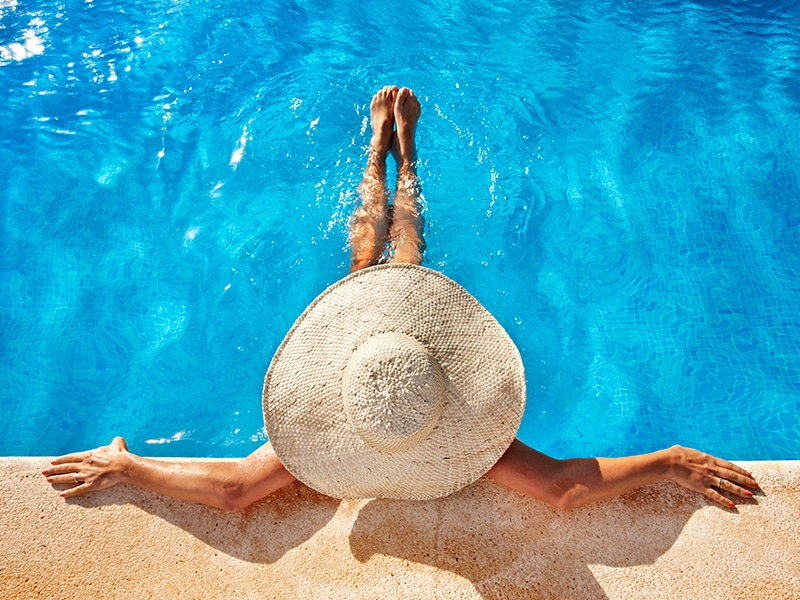While sunless tanning solutions avoid harmful UV rays, they contain chemicals and need to be used with caution.
The popularity of sunless tanning techniques, such as tanning beds, spray tans, and lotions, speaks to a desire for glowing, sun-kissed skin. But is “fake-baking” safe?
With so many trips to the beach canceled by the pandemic, sun worshipers need alternatives. And all that backyard sunbathing, even with sunscreen, exposes our skin to potentially dangerous levels of ultraviolet rays, the most common cause of skin cancer.
But how much do you know about the safety of sunless tanning products?
Jeannine Hoang, MD, dermatologist on the medical staff at Methodist Mansfield Medical Center, shared her knowledge on safely getting a tan this summer.
Tanning beds
These devices expose your skin to the same harmful UV rays as the sun. Even under the pretense of being “a controlled exposure,” it’s still a risky way to get a tan.
Tanning pills
There’s no such thing as a magic pill to give you a perfect tan. In fact, these tablets contain high doses of color additives that aren’t safe for anyone to consume. They can cause hives, damage your liver, and impair your vision — all in exchange for an unnatural orange tint.
Spray tans and lotions
Sunless tanning solutions mainly fall into two categories: bronzers and self-tanners. Bronzers are essentially makeup that washes off, providing a temporary skin darkening solution, Dr. Hoang says.
Self-tanners, on the other hand, use a specific chemical — dihydroxyacetone, or DHA — to stimulate a reaction in the skin that makes it appear darker. DHA is added to sprays, lotions, creams, and foams that are spread or sprayed onto the skin, either by the user or a professional at a tanning salon.
But is sunless tanning safe?
Sunless tanning sprays and lotions are certainly safer than tanning the old-fashioned way because they involve no UV exposure. But while they’re safer in that regard, Dr. Hoang says, self-tanning solutions aren’t without risks.
“It should be more widely known that although the Food and Drug Administration has approved DHA for external use, it has not been approved to be inhaled,” she says.
That’s often unavoidable when stepping into a spray tan booth, as is having the solution applied directly to sensitive membranes like the lips and nostrils and around the eyes.
So, Dr. Hoang counsels her patients to use the proper precautions when selecting products containing DHA. When using at-home tanning products, carefully follow the directions on the label.
For spray tanning, she advises the following:
Wear a mask or try not to inhale the spray.
- Shield the eyes or use protective coverings.
- Lubricate lips with lip balm before getting sprayed.
- Protect the nostrils with a plug or cotton balls.
- Wear undergarments to protect sensitive skin in the pubic area.
And remember, a fake tan won’t protect your skin from being baked for real.
“Regardless of which method of sunless tanning you choose,” Dr. Hoang says, “you still need to use sunscreen and follow reapplication rules.”

